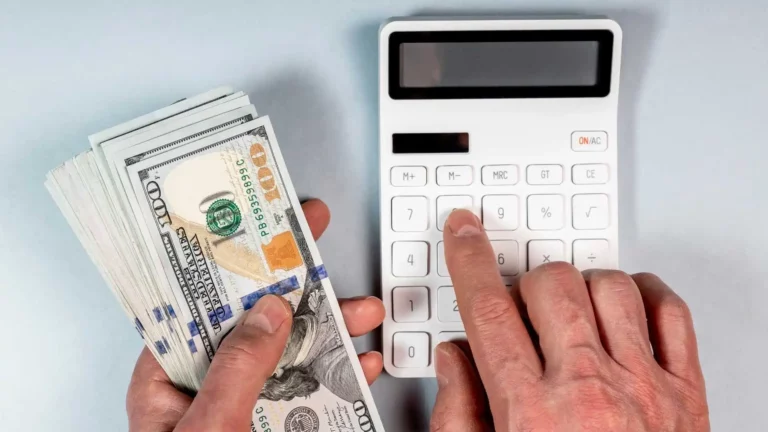Table of Contents
When the Cost of Borrowing Becomes the Cost of Living
For most of the past decade, “Should I rent or buy?” was a lifestyle preference. Rents were climbing, but mortgages were historically cheap. If you could afford a down payment, buying almost always made sense. Then interest rates changed everything.
In 2020, mortgage rates fell to record lows, by under 3% for a 30-year fixed loan. Fast-forward to 2025: mortgage rates are hovering around 6.5%. That same house you could afford four years ago now costs hundreds more per month in interest alone. This shift has made buying impossible for many hardworking Americans, who are already managing bills, childcare, medical expenses, and inflation.
The rent vs. buy decision has always been complicated. But today, rising interest rates sit at the heart of the choice.
What Interest Rates Really Are and Why They Matter So Much
When you borrow money to buy a home, you’re not just repaying the price of the house — you’re repaying the bank for lending it to you. The mortgage interest rate is essentially the price of money.
Here’s why it matters: mortgages are long-term. A small change in the rate magnifies dramatically over 30 years. An increase of even 1% can mean tens of thousands more paid over the life of a loan.
In 2020, a $300,000 mortgage at 3% meant a monthly principal-and-interest payment of about $1,265. In 2025, at 6.5% the loan costs nearly $1,900/month. Nothing about the house changed, just the cost of borrowing. That difference alone can push a family’s budget from “doable” to “unmanageable.”
Read related blog: Impulse Spending: Is “Buy Now, Regret Later” Costing You More?
Why Interest Rates Rose: The Broader Economic Story
We need to zoom out to understand why rates are so high now.
After the pandemic, the US faced its worst inflation in decades. Groceries, gas, utilities — everything surged in price. The Federal Reserve aggressively raised its benchmark interest rate in 2022 to control inflation. Mortgage rates, which tend to move with the Fed’s decisions and the bond market, followed suit.
In 2025, inflation has slowed, but rates remain elevated because the Fed is cautious about cutting too soon. For buyers, housing affordability is squeezed between high home prices and high borrowing costs.
How Rising Rates Tilt Rent vs. Buy Decisions
Rising interest rates don’t just affect buyers; they reshape the entire housing ecosystem.
- For buyers, higher rates increase monthly mortgage payments, making homes less affordable. Some would-be buyers are priced out entirely.
- Demand for renters often rises because fewer people can buy. But in 2025, new apartment supply has temporarily slowed rent hikes, creating a rare window when renting feels comparatively safer.
- For sellers, fewer qualified buyers mean homes sit longer on the market, cooling what was once a feverish seller’s market.
In short, when interest rates rise, renting becomes the default option for many households — even those who prefer to buy.
Read related blog: How to Negotiate Lower Interest Rates With Creditors
The Math in Action: Renting vs. Buying at Different Rates
Let’s compare side by side.
Scenario: $350,000 home | 10% down payment | $315,000 loan | 30-year fixed mortgage
- At 3% (2020 levels), monthly principal + interest = $1,330. Add taxes and insurance; you’re looking at ~$1,700–$1,800/month.
- At 5%, payments rise to $1,690 (~$2,100 with extras).
- At 6.5% (2025 levels), payments are $1,995 (~$2,400–$2,500 with extras).
Compare that to the median US rent of $2,100. At 3%, owning was cheaper. At 6.5%, renting is often the more affordable choice. This is why interest rates have become the tipping point. They’ve flipped the traditional wisdom that “buying is always better than renting.”
Regional Realities: Where Rates Hurt the Most
The impact of higher rates is not felt equally across America.
- San Jose, CA: The median rent is $3,200, and buying the median home ($1.4M) costs ~$8,000/month. Renting saves nearly $5,000/month.
- Chicago, IL: Rent ~$2,000; buying ~$2,200. Here, the gap is narrow. Buyers who can afford it may still see long-term value in ownership.
- Dallas, TX: Rent ~$1,900; buying ~$2,400. Renting saves ~$500 monthly, but ownership offers equity growth for long-term families.
- Cleveland, OH: In some affordable metros, mortgage payments are still close to or below rent. Rising rates sting less where home prices are lower.
Location matters. Interest rates affect everyone, but local housing prices determine how dramatic the impact feels.
Historical Context: We’ve Been Here Before
Interest rates in the US have always moved in cycles.
- In the early 1980s, mortgage rates hit a staggering 18%. Buyers essentially disappeared from the market.
- In the 2000s, rates hovered around 6–7% — very close to where they are now.
- In 2020–21, rates fell below 3% — the lowest in modern history. That drop set off the housing boom that drove prices to record highs.
Today’s rates aren’t unprecedented, but what’s different is the combination of high borrowing costs and record home prices. Never before have Americans faced such a double squeeze.
Read related blog: Buying vs. Leasing a Car: What Role Does Credit Play?
Who Feels the Pressure Most in 2025?
Not all households experience rising rates the same way:
- First-time buyers are hardest hit. Higher monthly payments make qualifying for mortgages harder, and down payments feel insurmountable.
- Millennials with kids are squeezed by competing costs — student loans, childcare, and housing —and many delay buying longer than previous generations.
- Current homeowners with 3% mortgages are reluctant to sell, locking up supply and worsening affordability.
- Retirees may rent again, downsizing to avoid mortgages and maintenance costs altogether.
The result is a generational divide: older homeowners sit on low-rate loans while younger households struggle to enter the market.
Renting in a High-Rate Environment: Pros and Cons
In times of high interest rates, renting has real advantages: affordability, flexibility, and protection from market risk. Renters don’t risk being “house poor” or seeing their home values stagnate.
However, the downsides remain: no equity, exposure to future rent hikes, and lack of stability. The choice to rent can feel safe in the short term but is limiting in the long term.
Buying Despite High Rates: When Does It Make Sense?
Even in 2025, buying can still be smart:
- Long-term appreciation can outweigh higher short-term costs if you plan to stay put 7–10+ years.
- Ownership may still be a better bet if renting is almost as expensive locally.
- If you can refinance later, locking in now and refinancing when rates drop is a viable strategy.
Ownership is still a path to wealth, but the timing and circumstances matter more than ever.
The Psychological Toll of Rising Rates
Beyond the spreadsheets, there’s a human story. Many renters feel trapped, paying money “with nothing to show for it.” Many would-be buyers feel shut out, watching homeownership slip further away. Even current homeowners feel “locked in,” unable to move because selling would mean giving up their low-rate mortgage.
This emotional burden explains why housing decisions in 2025 feel more fraught than at any time in recent memory.
Interest Rates and Emotional Health
High borrowing costs don’t just strain wallets; they affect mental health. Stress about affording rent, anxiety over being “locked out” of ownership, or regret from buying at a peak rate are all real. Acknowledging this human toll makes the blog empathetic and supportive.
Read related blog: Best High-Yield Savings Accounts Amid Rising Interest Rates [2025 Update]
The Bigger Picture: Interest Rates and the Economy
Housing decisions reflect broader forces:
- High interest rates cool demand, slowing home sales.
- Limited supply keeps prices elevated despite softer demand.
- Wage growth vs. inflation: Paychecks haven’t kept pace with housing costs, squeezing renters and buyers.
Understanding rent vs. buy today means understanding the economy itself — housing is both a personal decision and a national story.
How Interest Rates Influence Generational Wealth Gaps
Rising rates don’t just impact individuals; they widen the wealth divide. Older homeowners locked into 3% mortgages sit on appreciating assets, while younger renters struggle to buy at 6.5%. This gap shapes the future of generational wealth transfer and explains why Millennials and Gen Z may inherit fewer homeownership opportunities than Boomers.
The “Lock-In Effect” and Frozen Housing Supply
A unique 2025 challenge: millions of homeowners refinanced at ultra-low rates in 2020–21. Now they’re unwilling to sell, because moving means trading a 3% loan for a 6.5% one. This “lock-in effect” keeps inventory tight, inflates prices, and further tilts the market toward renting. Explaining this helps readers understand why there aren’t enough homes to buy, even if they wanted to.
What Happens If Rates Drop or Stay High? (Future Scenarios)
A forward-looking analysis:
- If rates fall to 5% in 2026 → demand may surge, home prices may rise again, and buyers who waited could face even stiffer competition.
- If rates stay above 6% → renting could remain cheaper for years, and buyers may delay ownership until well into the 2030s.
The Impact on Renters’ Markets
Rising rates don’t just affect buyers. When fewer people buy, more people rent. That means renter demand rises, pushing rents back up once new construction slows. This section clarifies that renters are not immune to rising rates; they experience them differently.
Read related blog: How to Financially Prepare for Buying Your First Home
Creative Alternatives Emerging in 2025
Housing innovation is on the rise:
- Rent-to-own programs: bridging renting and buying.
- Shared equity models: buyers split ownership with investors.
- Co-living and multigenerational homes: families pooling resources to offset high costs.
This segment gives readers hope and new solutions instead of a binary “rent or buy” framing.
How Beem Helps Families Stay Steady
Whether you rent or buy, high interest rates mean tighter budgets and less margin for error. Unexpected costs feel heavier when so much of your paycheck already goes to housing.
- Renters may struggle with rising deposits, rent hikes, or moving costs.
- Buyers face emergency repairs, closing cost surprises, or higher insurance premiums.
Beem’s Everdraft™ provides a safety net — a way to cover short-term gaps without falling into payday loan traps or overdraft fees. It’s not about replacing ownership or renting decisions; it’s about protecting your stability while you make them.
Turning Rising Rates Into Smarter Housing Decisions
High interest rates have changed the way Americans think about housing. In 2025, buying is no longer the obvious path to financial security, and renting is no longer just a temporary stopgap. Instead, both choices come with trade-offs shaped by the cost of borrowing, the price of homes, and the stability of your income.
What matters most isn’t whether you rent or buy, it’s how you prepare. If you rent, can you invest the money you save compared to a mortgage? Do you have a safety net to handle repairs and higher payments if you buy? Resilience comes not from choosing perfectly, but from managing whichever path you take.
With tools like Beem’s Everdraft™, you don’t have to face the volatility of today’s housing market alone. You can plan, adapt, and stay secure, no matter which side of the rent vs. buy decision you’re on. Download the app now!
FAQs on How Rising Interest Rates Impact Buy vs Rent Decisions
How do interest rates impact housing affordability?
Higher rates raise monthly mortgage payments, reducing the number of homes buyers can afford. A 3% vs. 6.5% loan can add hundreds of dollars to payments, pricing out many households.
Why are rates so high in 2025?
The Federal Reserve has kept interest rates elevated to control inflation. Mortgage rates follow, staying higher than the near-zero rates of the pandemic.
Is it better to wait until rates fall before buying?
Not necessarily. If rates fall, demand could spike, and home prices may rise further. For buyers who can afford it, purchasing now with the plan to refinance later can be a smart strategy.
Does renting make more sense when rates are high?
In most cities, yes. When mortgages cost 30–40% more than rent, renting offers breathing room. However, the gap is smaller in lower-cost metros, and buying may still be worthwhile.
How does Beem fit into the rent vs. buy decision?
Beem helps cover the unexpected, whether it’s a rent hike, moving deposit, or home repair. In a high-rate world where budgets are stretched thin, Everdraft™ Instant Cash offers financial flexibility to keep you steady. Get up to $1000 cash for emergencies, with no interest, credit checks, due dates, or income restrictions.














































